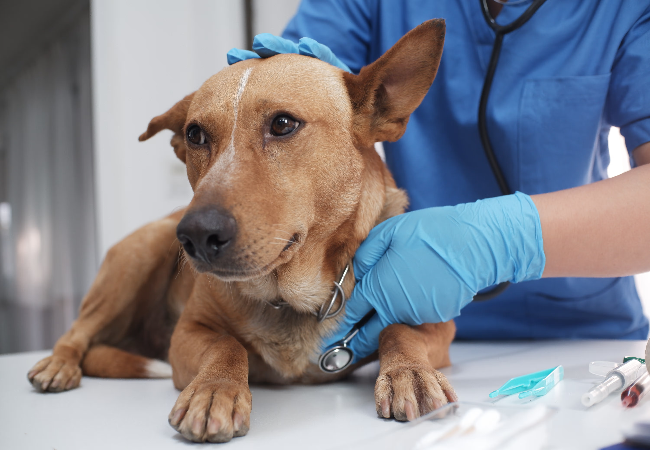Vet Guide to Degenerative Myelopathy in Dogs 2025 🐶🩺

In this article
Vet Guide to Degenerative Myelopathy in Dogs 2025 🐶🩺
By Dr. Duncan Houston BVSc
Degenerative myelopathy (DM) is a progressive, non-painful disease affecting the spinal cord’s white matter in older dogs. It leads to hind-limb weakness, coordination loss, and eventual paralysis, often compared to canine ALS.
📍 Causes & Breed Predisposition
- Genetic mutation: Affected dogs carry two copies of a mutated SOD1 gene; carriers have one copy.
- High-risk breeds: German Shepherds, Pembroke & Cardigan Welsh Corgis, Boxers, Bernese Mountain Dogs, Siberian Huskies, Chesapeake & Golden Retrievers, Pugs, Standard/Mini Poodles, Rhodesian Ridgebacks.
- Age of onset typically 8–14 years, though some start as early as 5 years.
👀 Clinical Signs & Stages
- Stage 1: Subtle hind-limb weakness, swaying, difficulty rising, occasional stumbling.
- Stage 2: Progresses to inability to walk using hind limbs; may stand briefly.
- Stage 3+4: Forelimb involvement, incontinence, muscle wasting, paralysis, possible breathing/swallowing difficulty.
🔬 Diagnosis
- Diagnosis is presumptive—confirmed by ruling out other causes via exam, X-rays, MRI, CT, CSF analysis.
- Genetic testing for the SOD1 mutation assesses risk and aids breeding decisions.
- Definitive diagnosis requires post-mortem spinal cord histopathology.
💡 Management & Supportive Care
- Physiotherapy & exercise: Hydrotherapy, guided walks, and assisted range-of-motion exercises delay progression.
- Mobility aids: Harnesses, slings, protective booties, non-slip mats, and rear-wheel dog wheelchairs (e.g., Walkin’ Wheels) improve quality of life.
- Supportive care: Massage, padding, bladder/bowel care, regular rotation to avoid sores.
- Emerging adjuncts: Therapies like laser, acupuncture, antioxidants, or CoQ-10 may support muscle health, but are experimental.
📈 Prognosis & Quality of Life
- DM is incurable; progression varies—hind-limb paralysis usually within 6–18 months; full-body paralysis and euthanasia decisions typically within 1–3 years.
- Dogs remain pain-free; an excellent quality of life can be maintained with active support.
- Small breeds may progress more slowly, and large breeds faster, due to care complexity.
✅ Dr Houston’s Veterinary Tips
- 🎯 Consider DM in older dogs with hind-limb ataxia, knuckling, and scraped nails.
- 🔍 Use MRI and rule out orthopedic/spinal causes before a presumptive DM diagnosis.
- 🧬 Offer genetic testing for SOD1 to guide breeders and owners.
- 🤸♂️ Start early with rehabilitation—rehab-supported dogs live significantly longer.
- 🚗 Introduce mobility aids early to support independence and wellbeing.
- 📆 Schedule regular wellness exams and owner education on hygiene, positioning, and mood.
If your dog is showing signs of hind-limb weakness, wobbling, knuckling, or difficulty rising—start with a neurological evaluation via AskAVet.com.🐾❤️






